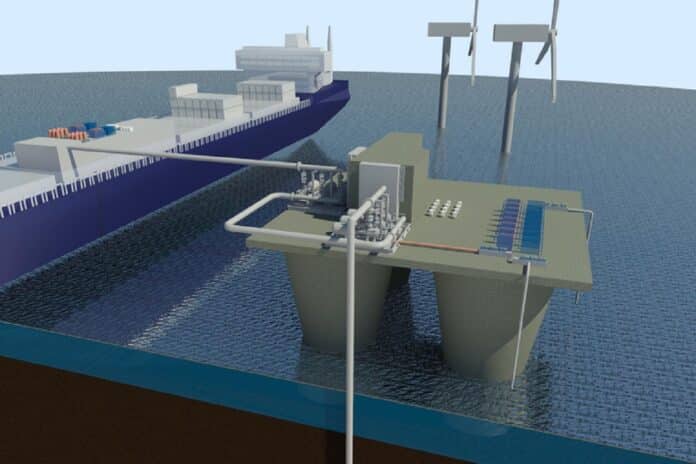The Earth’s atmosphere continues to build up carbon dioxide, so scientists worldwide are trying to find ways to remove the gas efficiently. The ocean absorbs carbon dioxide from the atmosphere. It absorbs about 30-40% of our gas emissions.
The possibility of removing carbon dioxide directly from ocean water has recently emerged as another promising way to mitigate CO2 emissions.
Researchers at MIT may have discovered the key to a truly efficient and inexpensive removal method.
Current methods for removing carbon dioxide from seawater use voltage across membranes to acidify food by water separation. Bicarbonates in Water are converted to CO2 molecules, which can be released under a vacuum.
Professor Ralph Landau, who teaches chemical engineering, said, “We wanted to avoid the need for introducing chemicals to the anode and cathode half cells and to avoid using membranes if possible,” He shows that membranes are expensive. Chemicals are needed to drive electrode reactions at either end of the stack, adding to the costs and complexity of the processes.
The group developed a reversible technique using reversible membrane-free electrochemical cells. Protons are released from reactive electrodes into the saltwater that is supplied to the cells, which causes the dissolved carbon dioxide in the Water to be released.
This process is cyclic. It first acidifies Water to convert dissolved inorganic bicarbonates into molecular carbon dioxide, which is then collected as a gas under a vacuum. In a second set of cells with reversed voltage, Water is fed back to the sea before its acidic Water is discharged back to its sea state. The roles of the two cells are reversed once one set of electrodes is depleted of protons during acidification and the other is produced during alkalization.
Varanasi, a professor of mechanical engineering, said, “This removal of carbon dioxide and reinjection of alkaline water could slowly start to reverse, at least locally, the acidification of the oceans that have been caused by carbon dioxide buildup, which in turn has threatened coral reefs and shellfish.” He also said The reinjection of alkaline Water could be done through dispersed outlets or far offshore to avoid a local spike of alkalinity that could disrupt ecosystems.
He said, “We’re not going to be able to treat the entire planet’s emissions.” However, the reinjection might be done in some cases in places such as fish farms which tend to acidify the Water. This could help to counter that effect.
After the carbon dioxide has been removed from the Water, more carbon removal procedures still need to occur. It might be buried deep beneath the surface of the Earth in geological formations or chemically changed into substances like ethanol, which can be used as a fuel for transportation, or it could be transformed into other specialized compounds.
Scientists said, “this could help shipping companies offset some of their emissions and turn ships into ocean scrubbers,”
The system could also be implemented by ships that would process Water as they travel to help mitigate the significant contribution of ship traffic to overall emissions. There are already international mandates to lower shipping emissions.
The system could also be used in offshore drilling platforms or aquaculture farms. It could eventually lead to the deployment of free-standing carbon removal plants worldwide.
He said, “With desalination plants, you’re already pumping all the water, so why not co-locate there?”
Varanasi said, “A bunch of capital costs associated with the way you move the water, and the permitting, all that could already be taken care of.”
The process could be more efficient than air-capture systems, Hatton says, because the concentration of carbon dioxide in seawater is more than 100 times greater than in air. In direct air-capture systems, capturing and concentrating the gas before recovering it is first necessary.
He said, “The oceans are large carbon sinks, however, so the capture step has already been done for you,” “There’s no capture step, only release.” That means the volumes of material that need to be handled are much smaller, potentially simplifying the whole process and reducing the footprint requirements.
He also said, “The carbon dioxide problem is the defining problem of our life, of our existence,” So clearly, he needs all the help he can get.”
Hatton said, “You can certainly consider using the captured CO2 as a feedstock for chemicals or materials production, but you’re not going to be able to use all of it as a feedstock,”
“You’ll run out of markets for all the products you produce, so no matter what, a significant amount of the captured CO2 will need to be buried underground.”
The idea would be to couple such systems with existing or planned infrastructure that processes seawater like desalination plants.
The scientist said, “This system is scalable so that we could integrate it potentially into existing processes that are already processing ocean water or in contact with ocean water,” The carbon dioxide removal could be a simple add-on to existing processes that already return vast amounts of Water to the sea. It would not require consumables like chemical additives or membranes.
These findings were found in the journal Energy and Environmental Science paper of MIT professors T, Alan Hatton and Kripa Varanasi, postdoc Seoni Kim, and graduate students Michael Nitzsche, Simon Rufer, and Jack Lake.
The research is still ongoing, with one goal of finding an alternative to the current step, which requires a vacuum to remove the separated carbon dioxide from the Water. Another requirement is to identify operating strategies to prevent mineral precipitation, which can foul the electrodes in the alkalinization cell and reduce overall efficiency in all reported approaches.
Hatton notes that significant progress has been made on these issues, but it is still too early to report them. The team expects the system to be ready for a practical demonstration project within two years.
Journal Reference:
- T Alan Hatton, Jack R Lake et.al. Asymmetric chloride-mediated electrochemical process for CO2 removal from ocean water. Energy and Environmental Science. DOI: 10.1039/D2EE03804H
